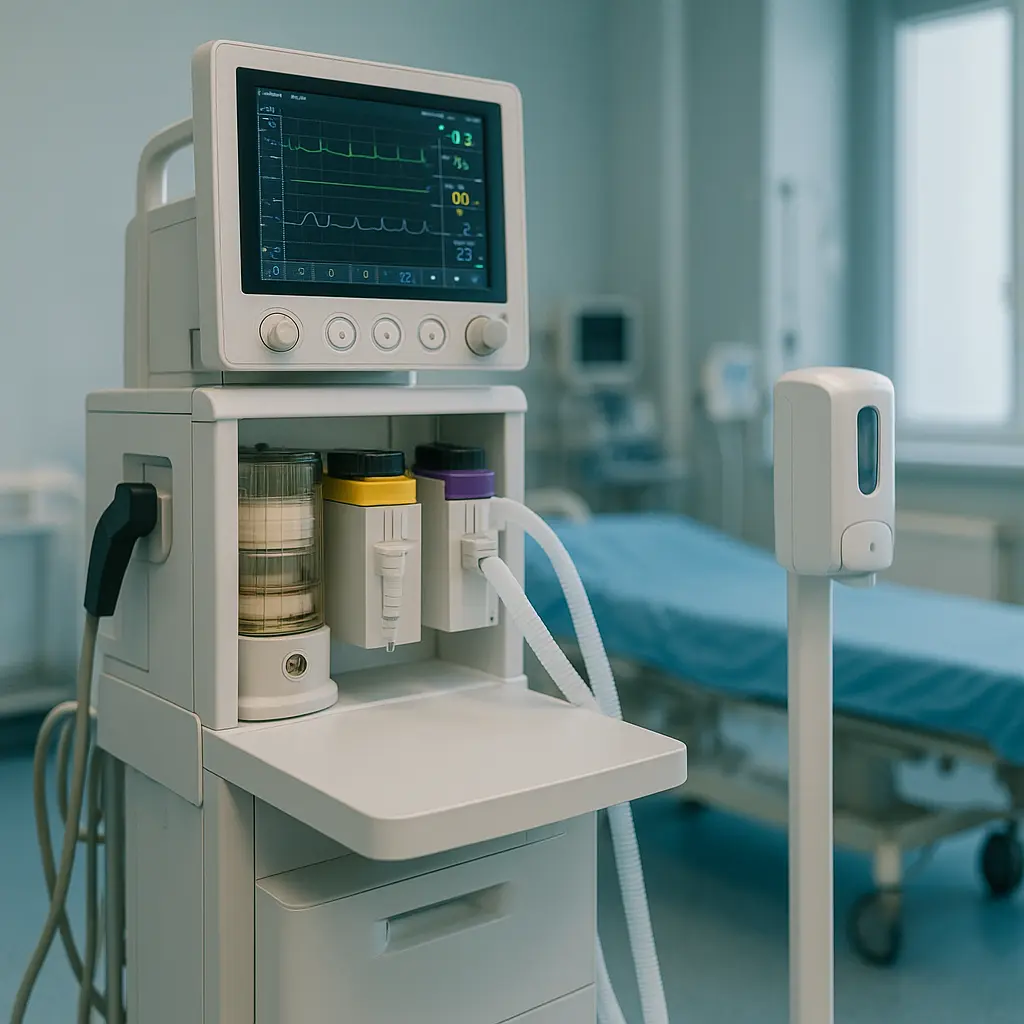How to Choose the Right Anesthesia Machine for Your Medical Facility

Anesthesia machines are the backbone of surgical procedures, ensuring patients remain safely sedated and pain-free. Selecting the right machine involves balancing performance, safety, and budget—while also matching your clinical workflow. This guide will walk you through the most important factors to consider before purchasing an anesthesia machine for your clinic or hospital.
⸻
1. Type of Anesthesia Machine
Anesthesia machines come in different models depending on the use case:
• Standalone Machines: Traditional models with integrated vaporizers and ventilators.
• Portable Units: Compact systems ideal for emergency and mobile use.
• Workstation Systems: Advanced machines with integrated monitors, gas delivery systems, and data recording.
Tip: Know your facility’s needs—whether you’re a surgical center, outpatient clinic, or ICU.
⸻
2. Ventilator Capabilities
The ventilator is critical in supporting or replacing the patient’s breathing. Choose machines that offer:
• Volume Control Ventilation (VCV)
• Pressure Control Ventilation (PCV)
• SIMV and PSV modes
• Adjustable tidal volume, PEEP, and respiratory rates
Advanced features support a broader range of patient conditions.
⸻
3. Integrated Monitoring & Safety Features
Modern anesthesia machines integrate monitoring for:
• Oxygen concentration (FiO2)
• Carbon dioxide (EtCO2)
• Gas flow and pressure
• Agent concentration
Alarm Systems are vital—look for machines with visual and audible alerts for gas disconnections or pressure anomalies.
⸻
4. Vaporizers and Agent Compatibility
Make sure your machine can handle the anesthetic agents you plan to use (Isoflurane, Sevoflurane, Desflurane). Look for:
• Temperature-compensated vaporizers
• Agent-specific safety interlocks
• Easy refill and calibration options
⸻
5. Power Backup and Battery Life
For mobile clinics or regions with unstable electricity, long-lasting battery backup is essential. Standard systems should offer at least 1–2 hours of autonomous function.
⸻
6. Ease of Use and User Interface
User-friendly design improves efficiency and minimizes training time. Features to look for:
• Intuitive touchscreen interface
• Quick startup/shutdown sequences
• Clearly labeled gas lines and ports
• Ergonomic positioning of controls
⸻
7. Maintenance and Serviceability
Choose models with accessible service parts and local technical support. Ensure the manufacturer provides:
• Scheduled preventive maintenance plans
• Software updates and technical manuals
• Easy access to replacement parts
Pro Tip: Check if consumables are universal or brand-specific.
⸻
8. Data Integration & Digital Connectivity
Advanced machines allow for:
• EMR integration
• USB or cloud-based data storage
• Remote access and performance logs
This ensures surgical history is tracked and improves future care planning.
⸻
9. Certifications and Regulatory Compliance
Ensure the machine complies with:
• ISO 80601-2-13 (anesthesia machine safety)
• FDA/CE certifications
• National/local healthcare regulations
This guarantees patient safety and legal compliance.
⸻
10. Budget Considerations & Warranty
While investing in high-end features is important, always match your selection to the real clinical needs. Consider:
• Total cost of ownership (including service)
• Extended warranties (2–5 years recommended)
• Training and onboarding support
⸻
Conclusion
A carefully selected anesthesia machine not only ensures patient safety but also streamlines your surgical workflow. Evaluate your clinical demands, patient volume, and future-proofing needs before making your purchase. Always prioritize reliability, safety, and after-sales support.


